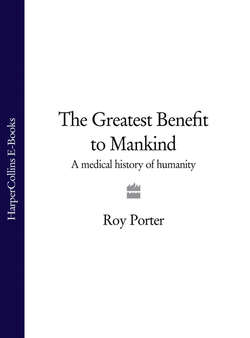Читать книгу The Greatest Benefit to Mankind: A Medical History of Humanity - Roy Porter - Страница 50
CHINESE HEALING
ОглавлениеPeasants traditionally went to folk or religious healers, for in popular thinking the supernatural was seen as a major cause of illness – sickness was believed to be created by demons or to be punishment for violating or neglecting one’s ancestors, who might then need to be propitiated with sacrifices. Learned medicine, by contrast, was wholly an elite matter, taught and practised by educated men, who treated clients from the middle and higher strata of society and from the state bureaucracy. This learned medicine was grounded on a corpus of texts: works on medical theory; on the classification, diagnosis and treatment of diseases (including collections of case histories); and on drugs and prescriptions.
The earliest surviving texts (over ten thousand specialized medical writings have come down) date back about twenty-two centuries, and incorporate even earlier materials. Dynastic circumstances account for this timing. The Chinese Empire became politically unified in 221 BC, and the emperors of the Han dynasty (206 BC – AD 220) established a body of political, philosophical and religious teachings. This period brought about the formation of the medical canon which constitutes the theoretical basis for the ‘high classical’ medical tradition and which was to set the mould for subsequent medical doctrines and developments. An integrated empire promoted the idea of a unified body, while policy-making for a flourishing state encouraged thinking about health. Thereafter the human body was envisaged, by analogy, to the state, as a series of operations which built up, allocated and processed precious and scarce resources, through communications networks. Good medicine was like good government.
Four core works make up the ‘high classical’ tradition, all of unknown authorship. They are the Yellow Emperor’s Inner Canon of Medicine (Huangdi Neijing), so called because it includes a dialogue between the ‘yellow emperor’ Huang-ti and his chief minister, Ch’i Po; the Divine Husbandman’s Materia Medica; the Canon of Problems; and the Treatise on Cold-Damage Disorders. The former two enjoy scriptural status, being considered as preserving the wisdom of legendary sages; every learned physician would be expected to be word-perfect with those. The latter two, for their part, were also classics which physicians would also be expected to know inside out; but they were thought to originate not in divine revelation but in experience, which was open to being queried, revised and even contradicted.
The Inner Canon contains teachings on core subjects: the physiological make-up of the body, including the circulation of qi (roughly: energy); health and the onset and prognosis of diseases; and therapy through needling (bloodletting or acupuncture). It depicts the human body like a kingdom, with organs like the heart and liver regarded as functions, or functionaries, working in harmony through communications and transport systems – the vessels and channels of the body (analogous to China’s great rivers), through which qi would flow.
The Canon of Problems addresses eighty-one ‘difficult issues’ which arise from the Inner Canon, relating mostly to diagnosis and needling treatment. Its significance alongside the Inner Canon was unquestioned until the Song dynasty (960–1279), but thereafter, where discrepancies were noted between the two works, it was assumed that the writer of the Canon of Problems had failed to grasp the authoritative teachings of the Inner Canon.
The Treatise on Cold Damage Disorders, for its part, deals with the identification and treatment of diseases caused by external cold factors (shanghan bing): approximately what western medicine would designate acute infectious fevers. Diagnosis follows what is known as the Six Warps theory, and therapy is not by needling but by drugs. Formulae are given for more than a hundred prescriptions – for countering fever, diarrhoea, and so forth – and many such items from the pharmacopoeia are still in use.
In the twelfth century Chinese physicians began to refine shanghan (cold factor) theory, developing the notion of heat-factor disorders (wenre bing), and thereby distinguishing between disorders in terms of their separate aetiologies. This tendency became more pronounced during the seventeenth century, when China was buffeted by waves of serious epidemics. Criticism of cold-damage theory then led to a succession of works on heat-factor disorders, especially the Wenre lun of Ye Tianshi (c. 1740), which elaborated the ‘triple burners’ (san jiao) system of disease classification.
Lastly, the Divine Husbandman’s Materia Medica includes descriptions of the properties and uses of over three hundred vegetable, animal and mineral drugs, arranged into three classes: upper, middle and lower. Viewed as gentle and cumulative in action, drugs of the upper class were meant to promote health and longevity; the more potent lower class of drugs was to be employed once the patient had actually fallen sick. This longevity-oriented pharmacy was abandoned in later materia medica, giving way to systems based on curative qualities, with items being categorized according to a scheme of correspondences between yin yang and wu xing (the ‘five phases’ or ‘five processes’). Thousands of materia medica listings were written down over the centuries, the principal one being the late sixteenth-century Bencao gangmu.
